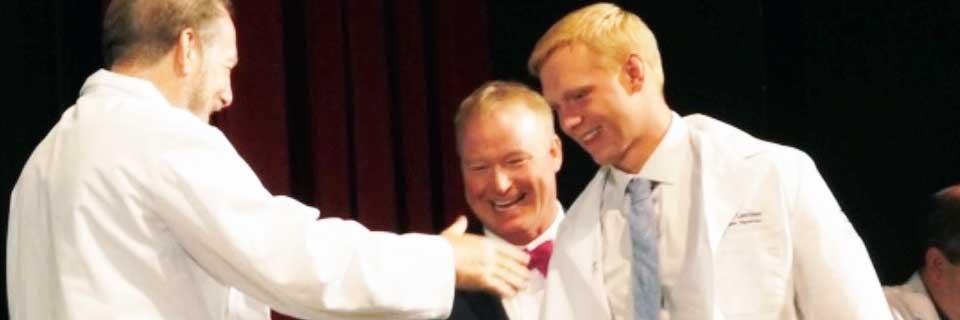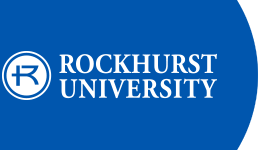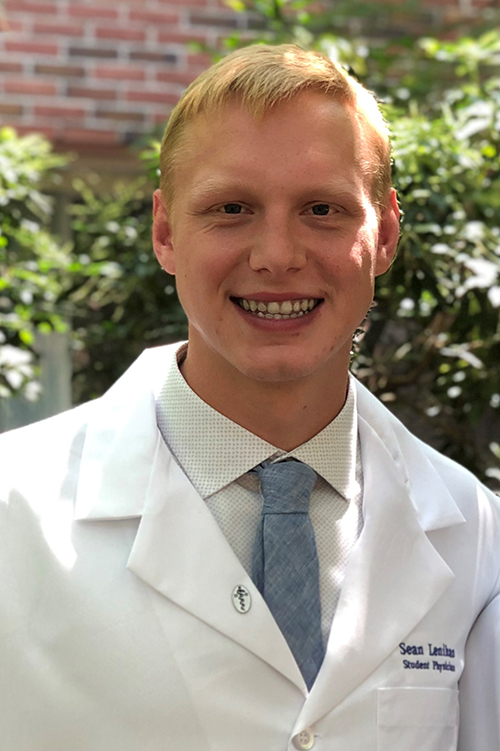Physics of Medicine Program Prepares, Inspires Future Doctor

Sean Lenihan was in elementary school when Rockhurst University Professor Nancy Donaldson started the Physics of Medicine degree at Rockhurst.
It was 2008 and Donaldson wanted to broaden students’ understanding of physics with curriculum relevant to their interest in medicine and healthcare. She started the program with the specific intention to make physics accessible, applicable and relatable to students outside of a physics Ph.D. pathway.
In 2012, Donaldson collaborated with a faculty member from the University of Loyola–Maryland, another Jesuit University, to apply for and receive a National Science Foundation grant to design an active-learning physics of medicine curriculum. The curriculum has since won at least three national awards since.
Now 2022, the Physics of Medicine program is still going strong at Rockhurst and is known for being one of the only ones of its kind in the United States. As an inquiry-based, active learning education with a research-based curriculum, the program has seen a significant increase in both the number and diversity of its physics students.
Among the students to pass through the program is Lenihan, who graduated from Rockhurst in 2020. Lenihan and his fellow students have experienced first-hand how it prepares them for the next step in their education and careers. For Lenihan, that was at a medical school at Touro College of Medicine in Middletown, New York.
Lenihan recently took the time to write to Donaldson from New York to express his appreciation for the preparation the program gave him:
Dr. Donaldson,
I hope all is well! I just wanted to write and give an update of where I am currently at, along with expressing my gratitude toward your program.
Medical school has been an engaging challenge that I have very much enjoyed. My current interest is in general surgery, and I already have been involved in both volunteer & research experiences. It has been a dream start.
I want to extend my thanks to your program at Rockhurst. The physics classes that I took with you have been the most helpful in preparing me for medical school. The interpretation of graphs, understanding transfer of energy, and application of physics principles to the body has been a huge advantage for me as a student. As you might imagine, pressure-volume graphs have become a crucial part of my life now. I feel lucky to have already seen this material & applied it to disease states within your class. It is so helpful to be able to understand physics principles that underlay pathological conditions. I hope your current students appreciate the value of the material you are teaching.
Anyhow, I just wanted to write and say thank you for everything you did & all the work you put into the Physics of Medicine major. Now that I am in medical school, I have a greater appreciation for the quality of the education I received. You have helped me to become one step closer toward my dream, and for that I cannot thank you enough.
With gratitude,
-Sean Lenihan
He initially chose Rockhurst because many people in his life – neighbors, friends, etc. – spoke highly of it. After doing his research, he was sold.
“Rockhurst was a great school close to home that provided everything I could need to foster my success.”
The native of St. Louis finished his time at Rockhurst with a Bachelor of Science in Biomechanics/Physics of Medicine and a Bachelor of Science in Biochemistry.
With med school in the rearview mirror, Lenihan is now moving on to the next phase of his education and healthcare career.
"I want to utilize the Jesuit philosophy to improve the quality of care within my community," Lenihan said of his ultimate goals. "Furthermore, I want to use evidence-based medicine and scientifically backed principles to address and overcome the wave of misinformation that plagues health information."
As Lenihan chases his dream, the next wave of Physics of Medicine students is completing their preparation to do the same. Donaldson continues to provide for her students what she herself was missing in her education. She has shaped the program into what she believes best serves an undergraduate student.
“I get excited to learn how things work, especially the human body,” Donaldson said. “But both when I was in school and at the time we started working on the physics of medicine curriculum, a lot of physics instruction was targeted at future physics Ph.D.s. I think we created the program that I would have loved to have had when I was an undergraduate.”








